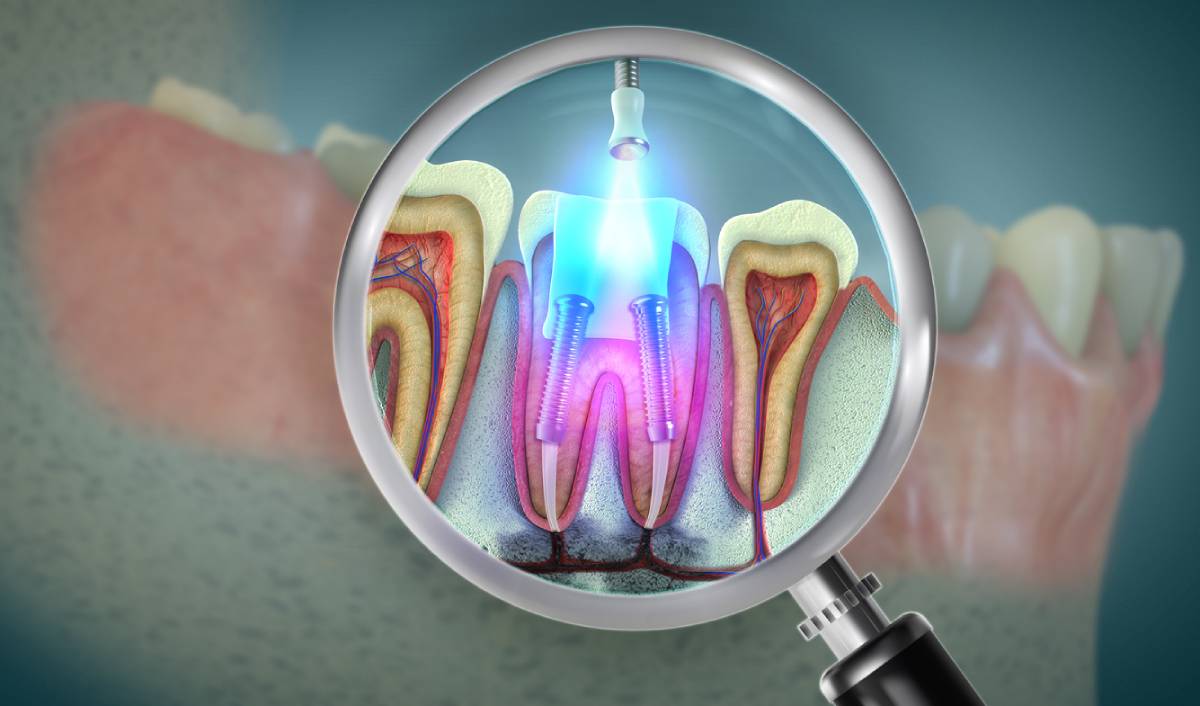Root canal treatment can be effectively used to save a severely decayed tooth. Before the procedure, patients typically want to know: How is a root canal performed? In this article, we talk about the steps of root canal therapy and the recovery process.
How Is a Root Canal Performed?
Root canal therapy is designed to remove infected pulp from the inner chamber of the tooth, thereby stopping decay and restoring tooth function. The procedure typically takes between 40 and 60 minutes per tooth, but it can take longer depending on the complexity of the case. Below, we describe the steps that usually take place during a root canal procedure:
Local Anesthetic
Before the root canal therapy begins, your dentist will administer a local anesthetic via an injection in the gum. The anesthetic numbs the procedure site, blocking pain and other unpleasant sensations during the treatment. Modern local anesthetics are typically sufficient to prevent the patient from feeling any discomfort during the procedure. Additionally, the dose might be adjusted depending on your personal pain tolerance and sensitivity levels.
Sedation
In some cases, a local anesthetic might be replaced or paired with one of the sedation options. Cases when sedation might be necessary include:
- The patient has severe dental anxiety that prevents them from going through with the procedure or causes stress.
- The patient finds it challenging to maintain a single position for an extended period.
- The patient has a high tolerance to local anesthetics.
If you opt for sedation during your root canal treatment, it will be administered before the procedure, either at the same time as the local anesthetic or instead of it. Sedation options available in dental offices include:
- Nitrous oxide (laughing gas)
- Oral sedation
- IV sedation
Root Canal Therapy
Once the anesthetic or sedation takes effect, your dentist will begin the procedure. The first step is to access the inner chamber of the tooth through its crown. If the tooth has an artificial dental crown, it is often removed before the procedure. Then, your doctor will remove the infected pulp from inside the tooth and clean the canals. The final step of the treatment involves filling the canals with a biocompatible dental material and sealing them. In some cases, an antibiotic might be placed before the canals are sealed to prevent reinfection.
A Dental Crown Placement
In some cases, the treated tooth may need to be covered with a dental crown after root canal treatment. Typically, a dental crown is recommended to reinforce and protect the tooth when its structure is significantly weakened by decay, and the tooth will not be strong enough to sustain the pressure from chewing in the long run. Dental crowns are typically made of materials that mimic the natural look of teeth, such as porcelain, resin composite, or porcelain-fused-to-metal. Sometimes, dental crowns can be made of gold or silver amalgam.
After the Root Canal, the Procedure
Typically, you can return to your daily activities almost immediately after the procedure, unless you had sedation. However, full recovery after the root canal therapy usually takes 7 to 10 days, during which you can experience the following symptoms:
- Tooth and gum sensitivity
- Mild toothache
- Swelling and redness of the gum tissue around the treated tooth
These symptoms should not cause any significant discomfort and will subside as the healing progresses. However, if you experience an acute toothache, especially one that is getting stronger and swelling, contact your dentist as soon as possible, as these symptoms may signify tooth reinfection.
To make your recovery faster and more comfortable, follow these tips:
- If your doctor prescribes antibiotics, take the entire course as instructed.
- Over-the-counter painkillers, such as Ibuprofen, can be used to manage pain and tooth sensitivity.
- Apply cold compresses to the procedure area several times a day if you experience swelling. Hold a compress for about 15 minutes at a time.
- Rinse your mouth with a saltwater solution several times a day to prevent infections.
- Brush your teeth for two minutes twice a day and floss every evening, but be careful when cleaning at the procedure site.
- Avoid strenuous activities and sports for 7 to 10 days after the procedure.
- Abstain from smoking and alcohol for the duration of your recovery.
- Switch to a soft diet for 4 to 5 days after the procedure and avoid very hot or very cold foods and drinks.
Get Root Canal Therapy at My Dentist Upland
If you notice any symptoms of tooth decay and infection, make an appointment with an experienced dentist at My Dentist Upland today. Receiving timely treatment, such as root canal therapy, can prevent tooth loss and restore the tooth’s function, ultimately benefiting your overall oral health. We look forward to your visit.

